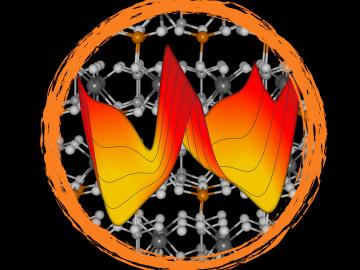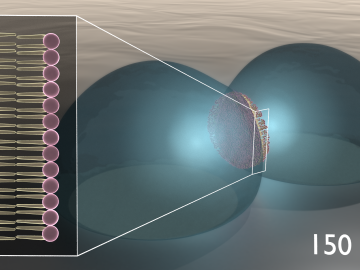Filter News
Area of Research
- (-) Materials (32)
- (-) Nuclear Science and Technology (8)
- Advanced Manufacturing (6)
- Biology and Environment (1)
- Building Technologies (1)
- Clean Energy (37)
- Climate and Environmental Systems (1)
- Computational Engineering (1)
- Computer Science (7)
- Fusion Energy (6)
- National Security (4)
- Neutron Science (16)
- Quantum information Science (3)
- Supercomputing (19)
- Transportation Systems (1)
News Type
News Topics
- 3-D Printing/Advanced Manufacturing (4)
- Advanced Reactors (3)
- Bioenergy (2)
- Clean Water (1)
- Composites (1)
- Computer Science (1)
- Cybersecurity (1)
- Energy Storage (3)
- Environment (2)
- Fusion (3)
- Isotopes (1)
- Materials Science (15)
- Microscopy (3)
- Molten Salt (1)
- Nanotechnology (4)
- Neutron Science (4)
- Nuclear Energy (8)
- Physics (1)
- Polymers (1)
- Quantum Science (2)
- Space Exploration (2)
- Sustainable Energy (4)
- Transportation (4)
Media Contacts

Researchers at Oak Ridge National Laboratory demonstrated that an additively manufactured polymer layer, when applied to carbon fiber reinforced plastic, or CFRP, can serve as an effective protector against aircraft lightning strikes.

As scientists study approaches to best sustain a fusion reactor, a team led by Oak Ridge National Laboratory investigated injecting shattered argon pellets into a super-hot plasma, when needed, to protect the reactor’s interior wall from high-energy runaway electrons.

The American Nuclear Society (ANS) has recognized two nuclear researchers, Julie G. Ezold and Yutai Katoh, both of the Department of Energy’s Oak Ridge National Laboratory, at its annual Winter Meeting and Nuclear Technology Expo, held in Washington, D.C.

Jeremy Busby, director of the Reactor and Nuclear Systems Division at the Department of Energy’s Oak Ridge National Laboratory, has been elected fellow of the American Nuclear Society for his contributions to developing materials for nuclear energy

A scientific team from the Department of Energy’s Oak Ridge National Laboratory and Vanderbilt University has made the first experimental observation of a material phase that had been predicted but never seen.

Researchers at ORNL and the National Renewable Energy Laboratory took inspiration from flying insects to demonstrate a miniaturized gyroscope, a special sensor used in navigation technologies.

If humankind reaches Mars this century, an Oak Ridge National Laboratory-developed experiment testing advanced materials for spacecraft may play a key role.

Researchers at the Department of Energy’s Oak Ridge National Laboratory have received five 2019 R&D 100 Awards, increasing the lab’s total to 221 since the award’s inception in 1963.

Researchers at the Department of Energy’s Oak Ridge National Laboratory, the University of Tennessee and Texas A&M University demonstrated bio-inspired devices that accelerate routes to neuromorphic, or brain-like, computing.

ORNL and The University of Toledo have entered into a memorandum of understanding for collaborative research.




